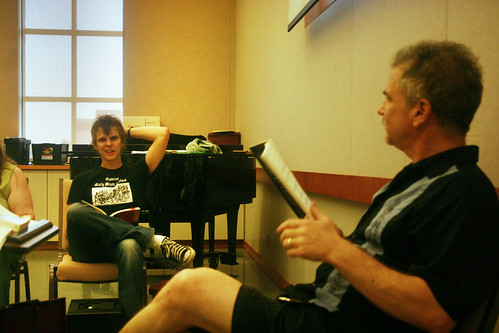

In the absence of a limited-access Interstate highway directly connecting Austin and Houston, 290 provides the fastest, most direct route between the capital and the largest city of Texas. 290 terminates at I-35 by the site of the proposed Highland Community. This creates the possibility of anchoring the proposed community with the terminus of a high-speed railway between Austin and Houston, easily accessible from the rest of the city and downtown through the main thoroughfares nearby and the presence of a Metro Rail stop. By being accessible to automobiles while being set up for a pedestrian-friendly environment, it has the potential of introducing transit-oriented living as a viable alternative to driving.


The present condition of site is typical of the American shopping mall, with a megastructure as a distinct figure against a void ground of vast parking lots surrounding it and isolating it from the rest of the urban fabric. The proposal calls for reversing this condition by turning the existing megastructure into a void around which a dense continuation of the urban fabric would be organized as a programmed mat of mixed-use development that will fill the void of the present parking lot.


The megastructure will be reconstituted as a framework for green spaces and flexible loft spaces for residential, commercial, and cultural use. The arcades will be converted into green, open-air courtyards that bring more natural light and ventilation into the spaces along them. The larger expanses of interior space will be punctured with lightwells to decrease the need for artificial lighting and to make them more inhabitable by multiple smaller programs. The expansive flat roof of the mall will be converted into a green roof to minimize heat gain and run-off, as well as to provide a pleasant visual “courtyard” for the mat of mixed-use development that will encompass the megastructure.
Like the existing megastructure, most of the paving of the surrounding parking lots will be retained, punctured only as necessary to secure the foundations for the programmed mat of mixed-use development that will be cover most of it. The paved surfaces will thus be retained as parking space and service spaces for the programmed mat built on it, the effective area of greenery is increased by generous planting on the roof of the mat. The mat will be organized so that it is thickest in section at the periphery of the site to create a strong delineation for the new community, to shield the community from the noise of the nearby highways, and to orient views towards the green roof of the megastructure as a unifying identity marker. Existing trees in the site will be retained to define “valleys” of interconnected plazas at grade level to relieve the mat, give definition to their spaces and programs, aid cross ventilation, and provide friendly pedestrian access to and from the surrounding streets.
In addition to a healthy mix of mixed-income housing, local and chain businesses, places of employment, recreational facilities, and social services, the community will include facilities proper to its role as a transportation node and gateway, such as visitor accommodation and meeting venues.
To ensure visual and spatial variety and foster a healthy competition to encourage quality, multiple designers will be employed to realize to specificity the spaces within the proposed framework. The mat, for instance, can be a series of buildings of various scales that are unified by the proposed scheme but need not conform to a specific aesthetic. Artists will be commisioned to give the community further character through public art, with the recommendation that a certain percentage of the budget for the development of the scheme specifically set aside for this purpose from the onset.


















































